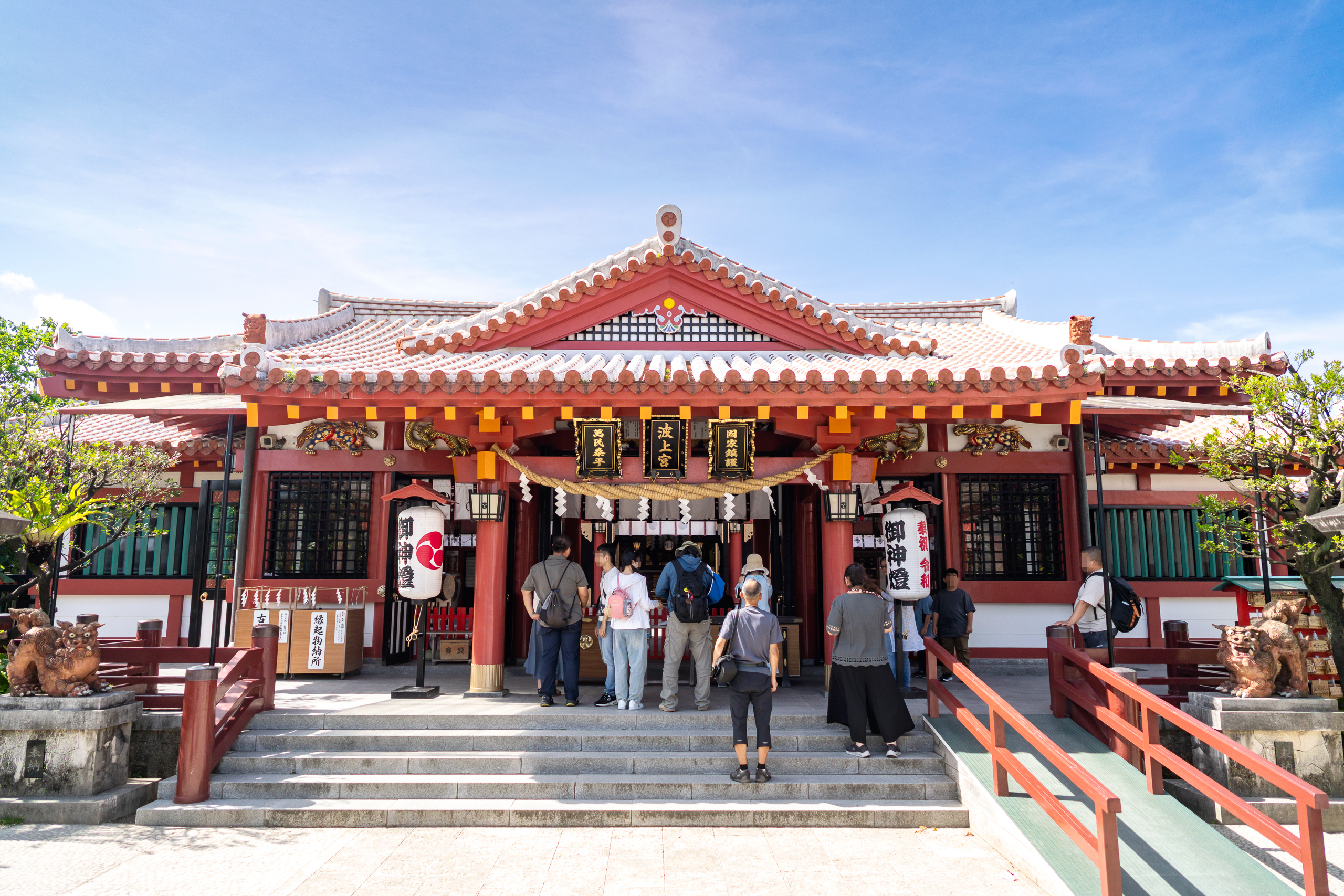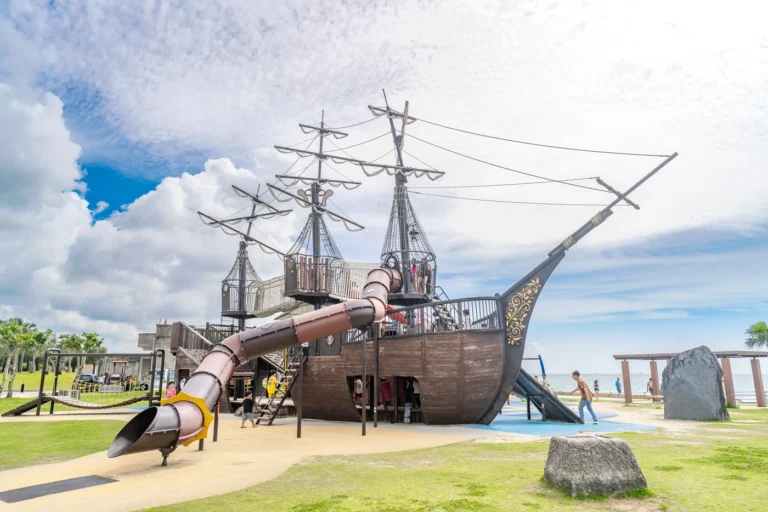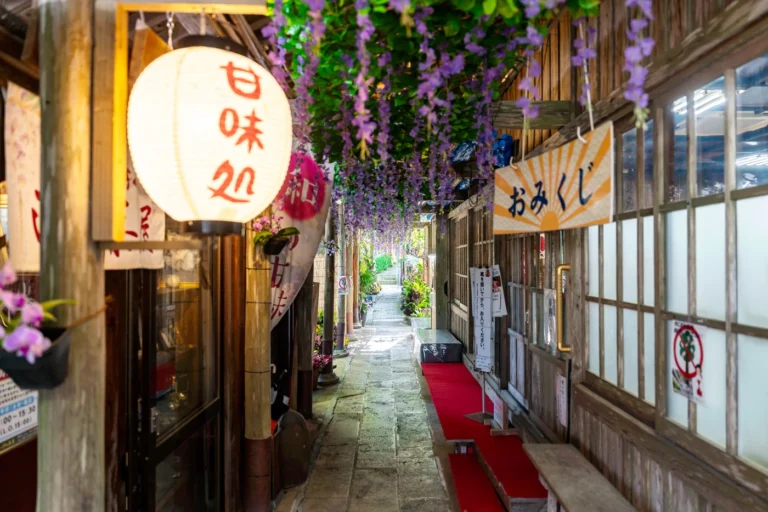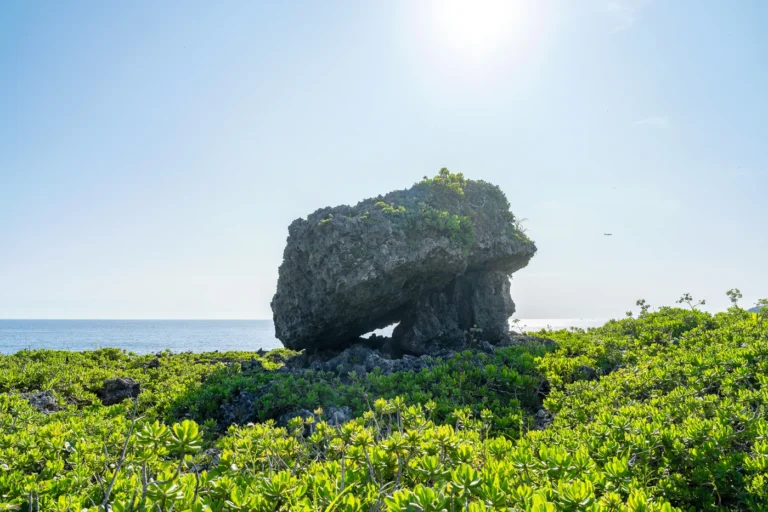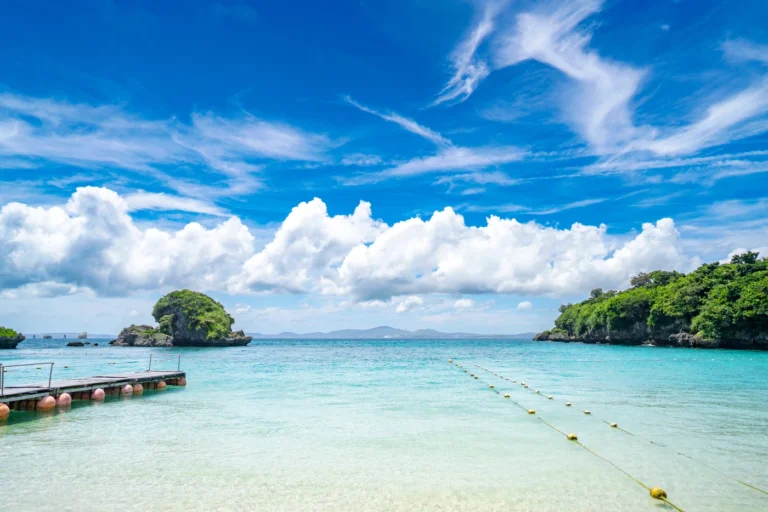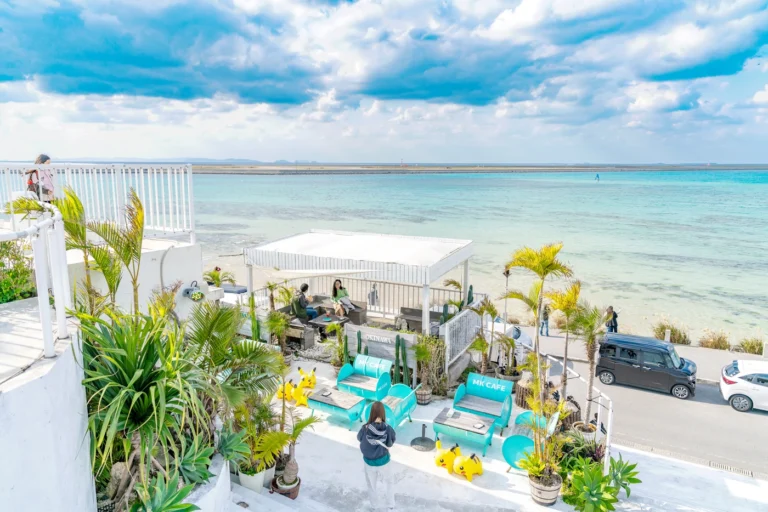Naminoue Shrine
👋 Haisai! It’s CULT here.
It’s almost summer holiday season and the Okinawa rainy season has ended, so it’s time to travel, right? If you’re reading this, I guess it’s because you’re planning a trip to Okinawa.
Okinawa is an island with numerous beaches and it’s perfect for a scenic drive along the beautiful Route 58. There’s a shrine that wishes for safe swimming and driving. That’s the Naminoue Shrine.
📌 Location and Opening Hours of Naminoue Shrine
⛩️ Naminoue Shrine is located in Naha city and can be easily visited if your accommodation is on Kokusai Street. It’s about a 20-minute walk, so renting and wearing something like an Okinawan kimono could be a nice way to set the mood. If you find Google Maps a bit tricky, it might be helpful to click here to save it.
It is open all year round, including New Year’s Day, and ⏰ the opening hours are from 9 AM to 5 PM daily.
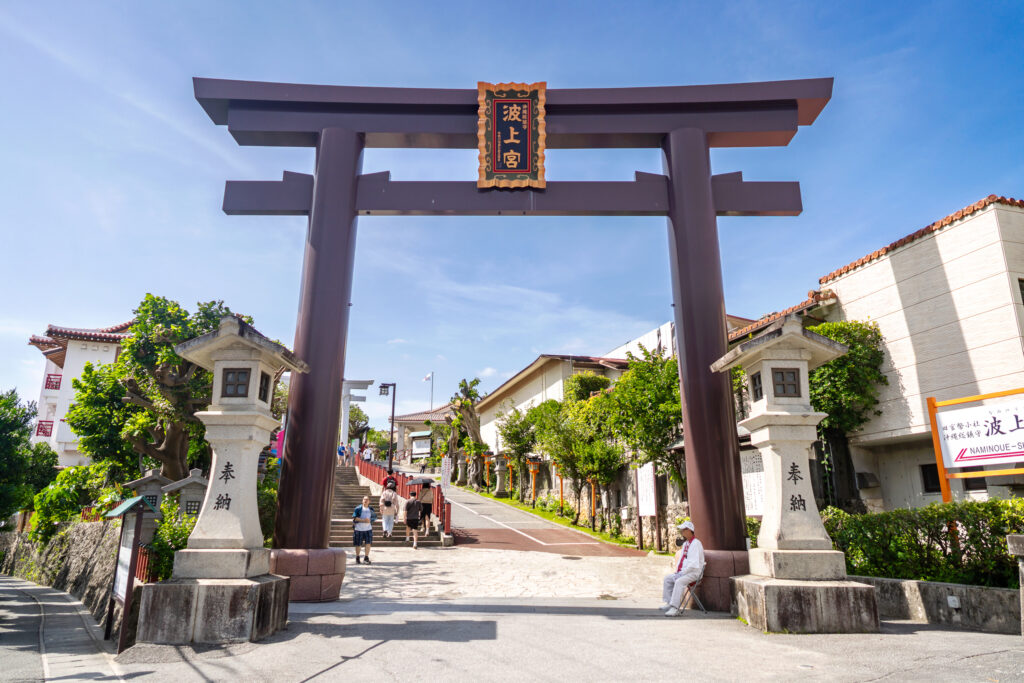
While you can come from Naminoue Beach, today let’s take the traditional route and walk through the main gate. There are paid coin parking lots nearby, but the prices are a bit high. However, since people usually visit briefly, it’s not too burdensome. It costs about 400 yen per hour.
After exploring here, I recommend also visiting Fukushu-en.
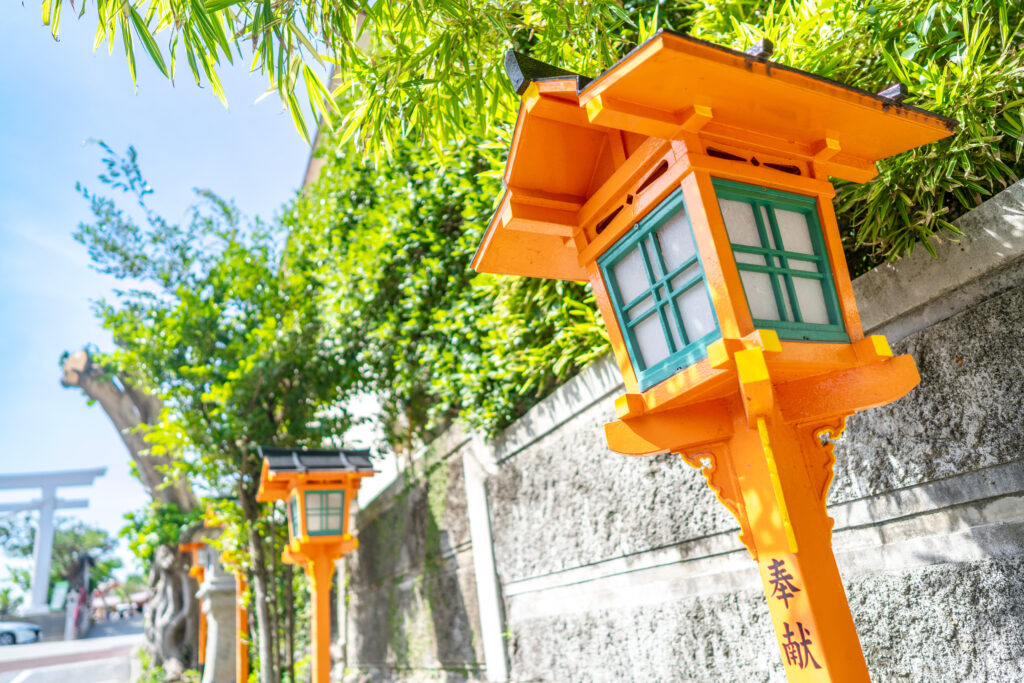
The website isn’t very well maintained, but they do occasionally hold night events. During those times, the lights here are turned on, and although I haven’t seen it myself, I get the strong feeling that it would be beautiful. I’m not sure why Japan is so fond of illuminations, though.
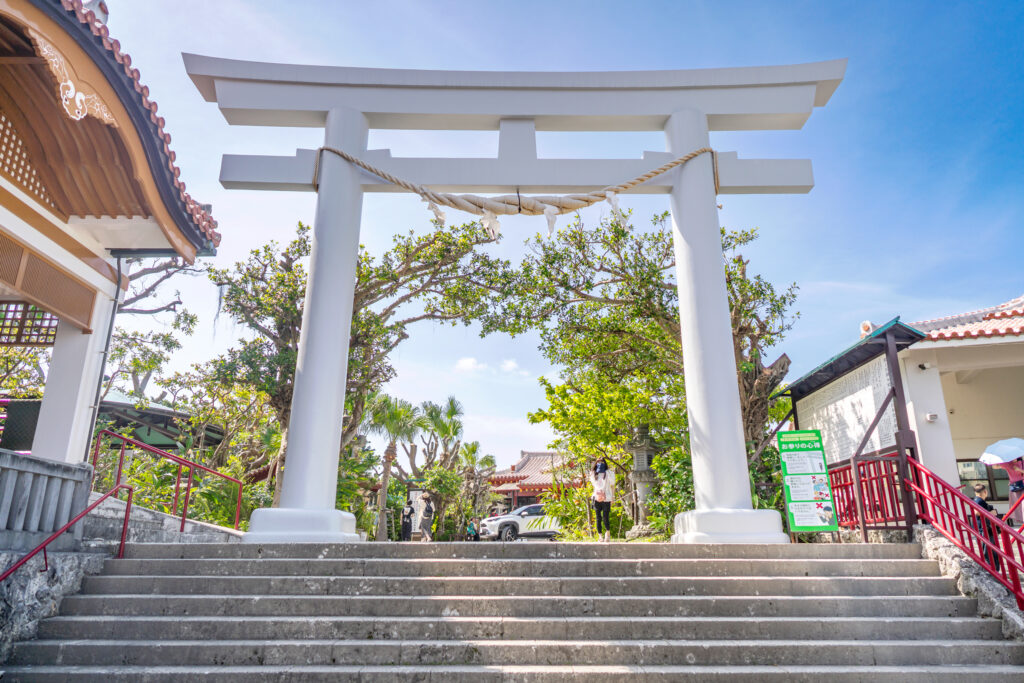
After passing the first torii, you’ll come across a second large torii. You can bow silently to the deity under that white torii and then proceed. I’m not sure if this is exactly right. The guide on the right says so, but since people were just bowing silently and moving on, I thought that was the way to do it.
⛩️ Naminoue Shrine
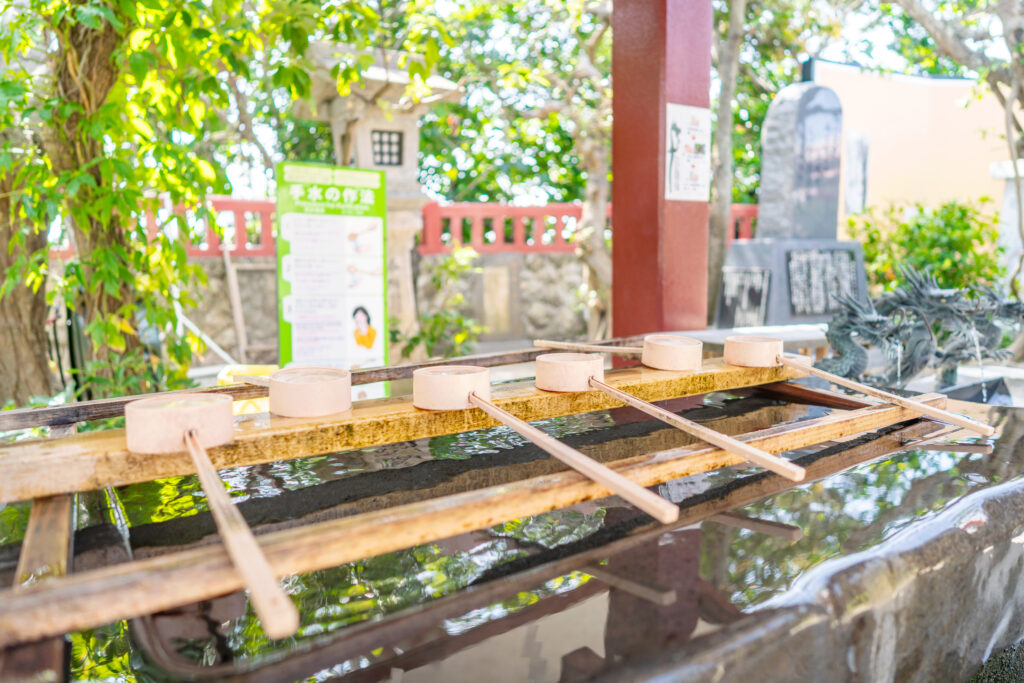
This is a place called ‘Tetsumiya’ where there is water. I’ve mostly seen this in Japanese animations, but seeing it in person for the first time at Naminoue Shrine in Okinawa is quite special. It is said that you should wash your hands and mouth before entering the shrine to meet the deity.
I believe experiencing things like this is what cultural experiences are all about.

At the management office, you can find a variety of talismans for sale.
Traffic Safety Talisman (交通安全守) 1,500 yen / Health Wish Talisman (健康守) 800 yen / Academic Success Talisman (学業合格守) 800 yen / Safe Delivery Talisman (安産守) 800 yen / Pregnancy Wish Talisman (子授け守) 1,500 yen. These are roughly the prices displayed. There are more options available, but I mentioned the ones you might practically consider purchasing. If needed, taking one as a souvenir isn’t a bad idea 🥰
They also perform ceremonial events… At the shrine, people dressed in traditional attire offer prayers. It’s a scene often seen in Japanese animations, and you can experience it firsthand. Of course, there is a fee involved. The price is said to be around 5,000 to 10,000 yen.
Prayer Ceremony (祈願祭) for health, traffic safety, business, exam success, etc.
Purification Ceremony (お祓い) to cleanse negative energy
Exorcism (厄除け) to ward off bad luck
Child Conception Prayer (子授け) a couple’s ceremony to wish for children
Newborn Blessing (初宮詣) a ceremony to wish for the health and happiness of a newborn
Wedding Ceremony (神前結婚式) traditional Japanese wedding, over 100,000 yen
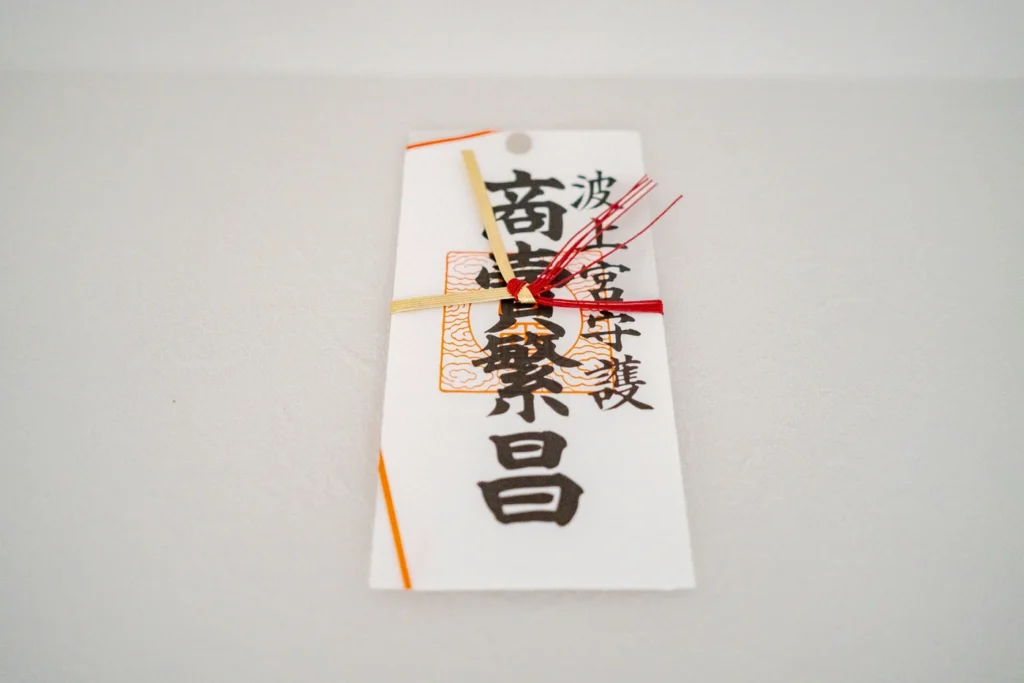
This is a talisman wishing for business prosperity. I received it as a gift 🎁
I’ve been told to place it at the highest point in the house, so I’ve attached it at the highest point inside the bedroom. After a year, it should be returned to Naminoue Shrine. I think I might be able to visit again in a year.

Today, the most important place is Naminoue Shrine.
Throw a coin there, clasp your hands, and make a wish. My wish is for the Cultravel blog to become famous quickly. Since you’re reading this, it will happen soon. Let’s stay strong 💪
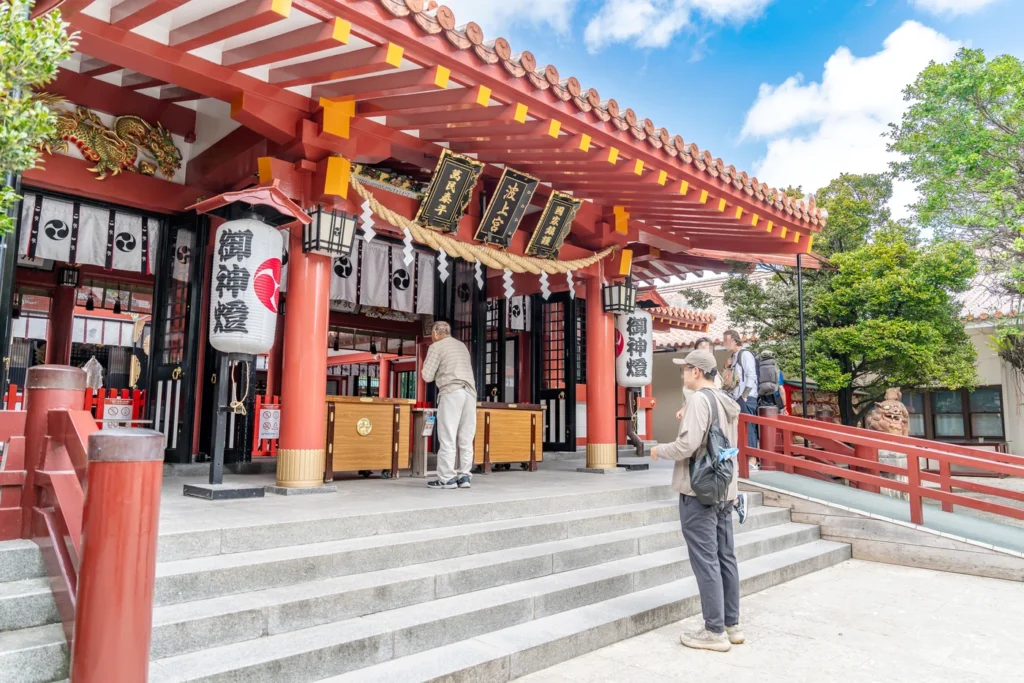
Actually, I often do snap photography here in Okinawa. Usually, I wear a yukata or Okinawan kimono for the shoot. I’ll organise those photos and show them to you later 📸
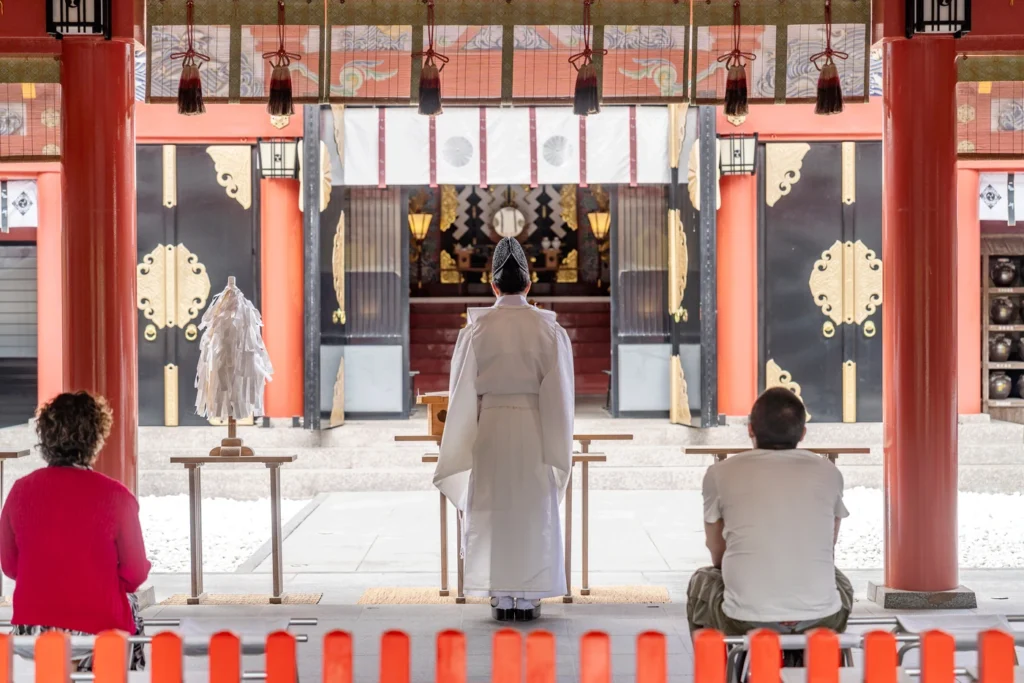
This is an event held at the shrine.
If you pay the amount related to your concerns at the office I mentioned earlier, they will hold a prayer event like this for you. In my experience, it seems that the gods at Japanese shrines are quite good at granting wishes.
Both Naminoue Shrine and Okinogu Shrine are related to financial luck, so they look quite prosperous. In Okinawa, there are eight shrines known as Ryukyu Hachisha, but the others seem a bit less affluent.
After all, having a lot of money might be the best wish, right? 💴
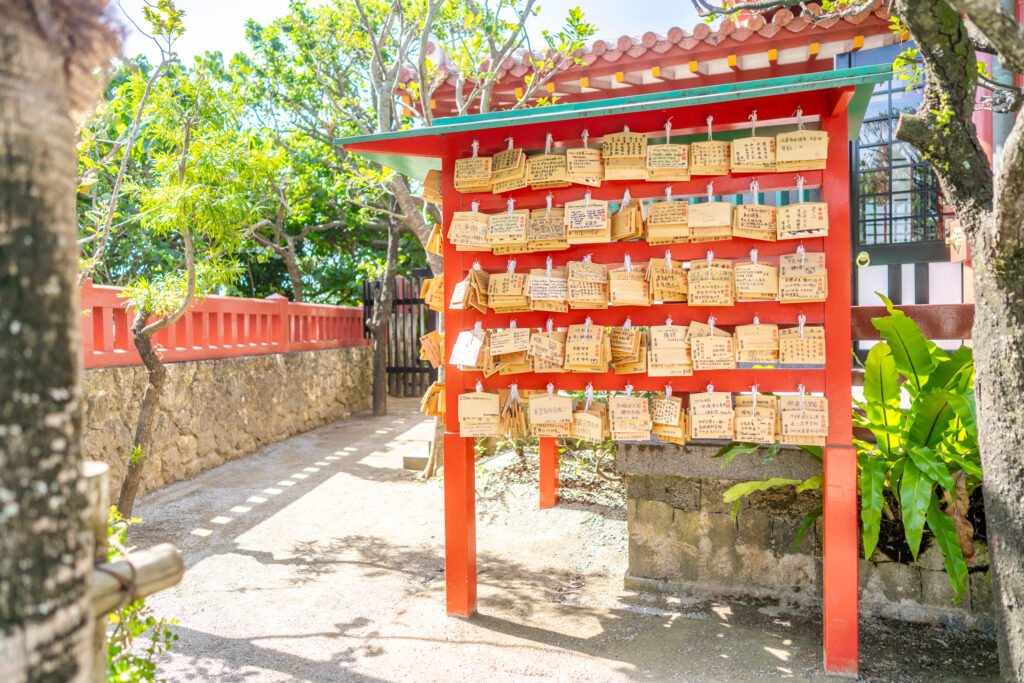
You can write your wishes on a wooden plaque called an ema and hang it up. To be honest, I’ve never hung an ema at a shrine. I often see ema hanging inside izakayas when I go there for a drink. Of course, you can purchase ema at the office I mentioned earlier. The price is 500 yen.

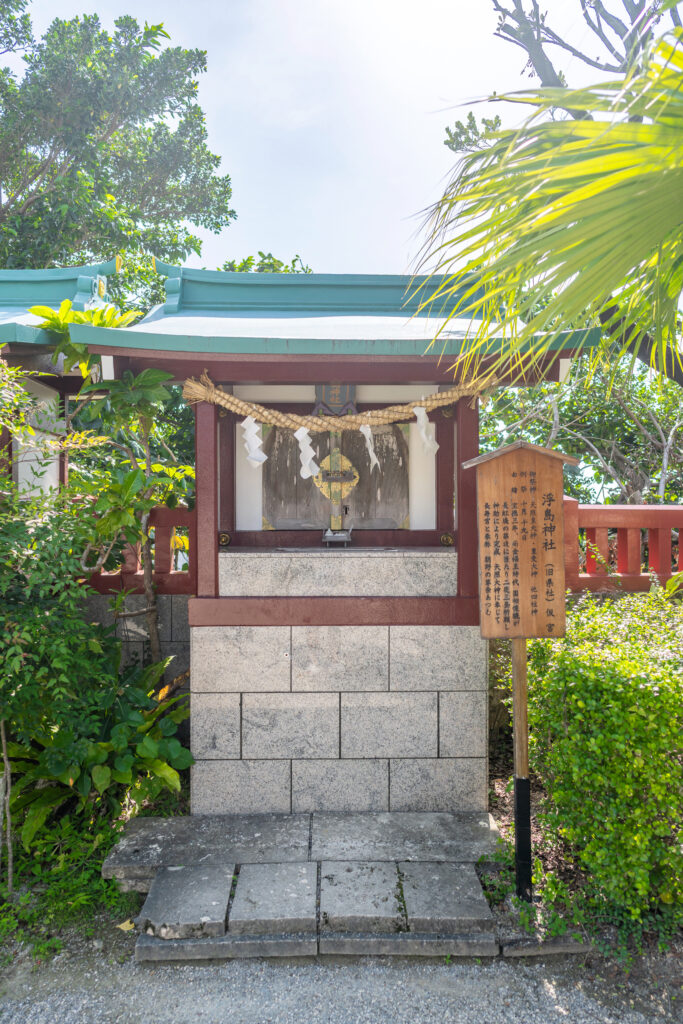
This is called the Ukishima Shrine (浮島神社), and in the old Ryukyu Kingdom days, this area’s name was not ‘Naha’ but ‘Ukishima’. This means it’s a very ancient deity. A god that protects Naha, Ukishima.
Of course, you can throw coins here and make a wish.
Shrine on the Waves
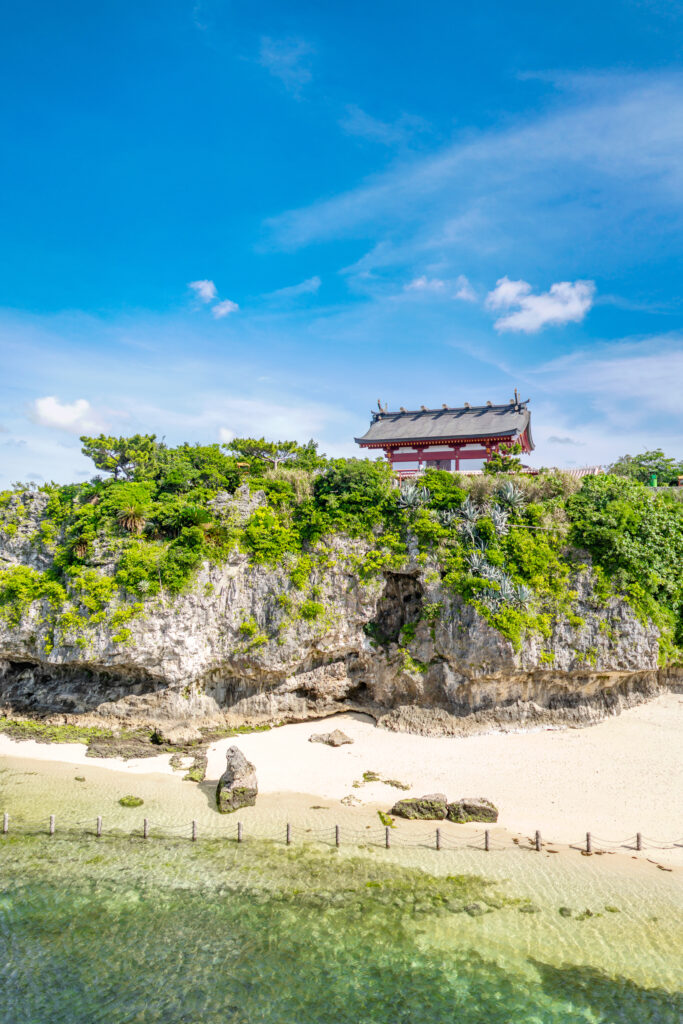
Naminoue Shrine, when translated literally, means Nami: wave, Ue: above, so it translates to the Shrine above the waves. This photo perfectly illustrates that. Although there are many breakwaters in front of Naha, preventing large waves, this place, Naminoue Shrine, was where ceremonies were held facing the big waves in the past. You can actually see this view if you go to the opposite side. Right next to it is Naminoue Beach.
Okinawa is beautiful in the north, but there are also several places worth visiting in Naha, even if just for a short while. I’ll introduce these places to you one by one. I’ll stop here for now, and see you again with more Okinawa travel information. Matayasai 👋

